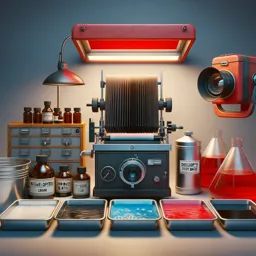Introduction
GIMP (GNU Image Manipulation Program) is a powerful and versatile open-source image editing tool that has become a favorite for digital artists and designers around the world. Whether you are creating concept artwork, illustrations, or digital paintings, GIMP’s vast set of features offers enormous potential. In this article, we’ll guide you through essential tips and techniques specifically tailored for creating digital art in GIMP.
Setting Up Your Digital Art Workspace
One of GIMP’s strengths is its customizable interface. To optimize your workflow for digital art:
- Dock Painting Tools: Arrange your brush, color, and layer panels for easy access. You can detach and move docks to fit your process.
- Set the Canvas Size: Before starting, set an appropriate canvas size (such as 3000×2000 pixels at 300 DPI for high-res images).
- Enable Single-Window Mode: Access Windows > Single-Window Mode for a unified workspace.
The Right Brushes for Digital Art
Brushes are the backbone of digital painting. GIMP comes with a variety of brushes, but you can also create your own or download presets:
- Explore brush dynamics to simulate pressure, tilt, and speed for natural strokes.
- Use custom brushes for texture or effects—download community packs or craft your own with the Brush Editor.
- Adjust opacity, size, and angle on the fly using the tool options for more expressive artwork.
Working with Layers and Groups
Layers allow you to separate linework, colors, shading, and special effects. Grouping layers helps manage complex illustrations:
- Keep your sketch, lineart, and color on separate layers for easy edits.
- Use grouped layers to organize by character, background, or element.
- Try Layer Modes (such as Multiply for shading or Overlay for lighting effects) to add depth.
Color Selection and Palettes
Consistent color schemes are crucial for digital art. In GIMP, you can:
- Use the Color Picker Tool to select and save shades in the Palette panel.
- Create custom palettes for your project and switch between foreground/background colors easily.
Adding Details with Selection Tools
Refine your artwork by targeting areas for detail without affecting the rest of the image:
- Use Free Select (Lasso) or Polygonal Select for precise shapes.
- Feather selections for smooth edges or to blend color transitions seamlessly.
Enhancing Your Artwork with Effects
GIMP offers filters and effects to add flair to your digital art:
- Gaussian Blur for soft shadows or depth of field.
- Noise and Texture filters for a traditional look.
- Experiment with Color Balance and Curves to unify your image’s mood.
Exporting and Sharing
Once your masterpiece is finished, export it in the best format for your needs:
- JPEG for online sharing.
- PNG for transparency and high quality.
- Keep a copy of your XCF file to retain layer data for future edits.
Conclusion
GIMP is a free yet professional-grade tool for creating digital art. With its flexibility, variety of brushes, layers, and a parade of effects, you can achieve incredible results. Dive in, experiment, and discover your creative voice using GIMP!

























